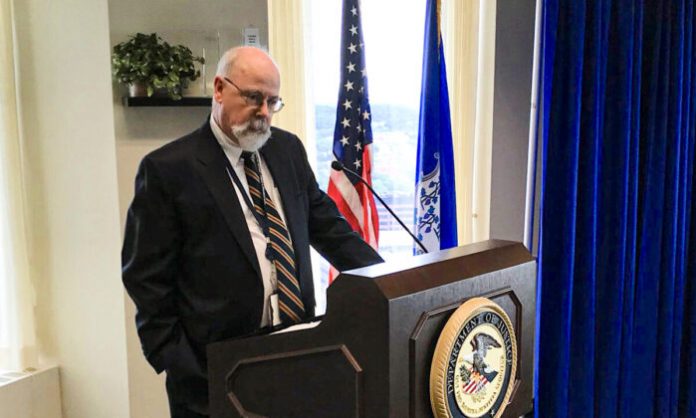John Durham speaks at a conference in New Haven, Conn., on Sept. 20, 2018. (Courtesy of the U.S. Attorney’s Office for the District of Connecticut)
by Jeff Carlson and Hans Mahncke
April 20, 2022
As the trial of Hillary Clinton campaign lawyer Michael Sussmann approaches, special counsel John Durham and Sussmann’s lawyers are arguing over what evidence can be admitted. As part of those arguments, Durham filed a “routine” response late on April 15, detailing why the evidence he’s seeking to admit is both relevant and admissible.
These back-and-forth filings are common in the weeks leading up to federal trials, but the disclosures made by Durham are anything but routine.
The most striking of these disclosures concerns data trails that Sussmann and his cohorts, including “Tech Executive-1” Rodney Joffe, had supposedly uncovered between Trump and the Russian Alfa Bank. It was widely claimed that these data trails established a direct communications channel between Trump and the Russian government.
Sussmann took the data to the FBI in September 2016 hoping to trigger an investigation into Trump and his campaign. The existence of an FBI investigation would then be used by the Clinton campaign as a media kill shot against Trump in the final weeks of the 2016 election.
The scheme didn’t work as planned, and Trump went on to win the election. But this setback didn’t put the brakes on an operation that had now turned into an effort to hobble Trump’s presidency. In February 2017, after Trump was inaugurated, Sussmann took the same data trails to the CIA.
CIA Knew Early on That Sussmann Data Fabricated
Durham has now disclosed that the CIA immediately knew that both data trails were fake, finding that they were not “technically plausible,” that they didn’t “withstand technical scrutiny,” that they “contained gaps,” that they conflicted with themselves, and that they were “user-created” and not machine- or tool-generated.
Read More HERE


